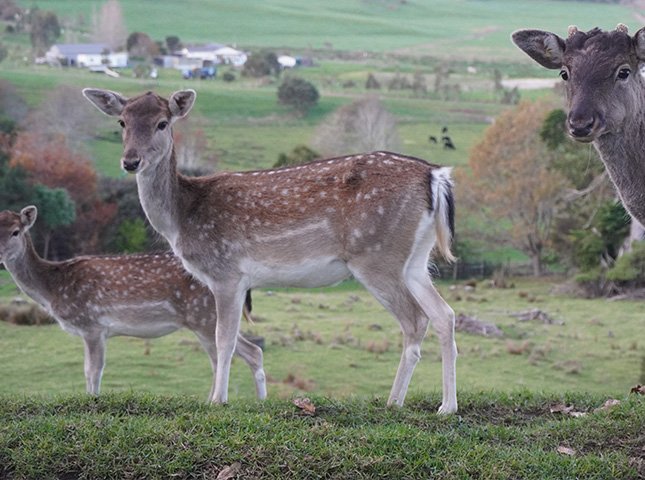Deer are fascinating creatures with a range of behaviors that intrigue both wildlife enthusiasts and hunters. One such behavior is the wagging of their tail. But what does it signify? Is it a sign of contentment, alertness, or something else entirely? In this article, we’ll delve deep into the reasons behind a deer’s tail wag and what it communicates.
Table of Contents
Key Takeaways
- Deer use their tails to communicate various emotions and states.
- Tail wagging can indicate relaxation, alertness, or even agitation.
- Observing the context in which the tail wag occurs is crucial to understanding its meaning.
Understanding Deer Communication
Deer, like many animals, use body language as a primary means of communication. Their ears, posture, and especially their tails convey messages to other deer and animals in their vicinity.
The Relaxed Wag
When a deer is feeding or resting and occasionally flicks its tail, it’s a sign of relaxation. This gentle wag indicates that the deer is at ease and perceives no immediate threats in its surroundings.
The Alert Wag
If a deer suddenly raises its tail, displaying the white underside, it’s a sign of alertness. This “flagging” behavior is a warning to other deer that potential danger is nearby. The bright white tail is easily visible, even in dense forests, making it an effective alarm signal.
The Agitated Swish
A rapid back and forth swishing of the tail, often accompanied by foot stomping, indicates that the deer is agitated or annoyed. This behavior can be observed when deer are bothered by insects or when they sense a predator but can’t pinpoint its location.
Factors Influencing Tail Wags
Several factors can influence the frequency and type of tail wags a deer exhibits:
Environmental Factors
In areas with a high concentration of biting insects, deer might wag their tails more frequently to ward off these pests. Similarly, in regions with higher predator populations, the alert wag might be more common.
Seasonal Changes
During the rutting season, bucks might display more aggressive tail behaviors, especially when competing for the attention of does.
Deer’s Age and Experience
Older, more experienced deer might be less reactive to potential threats, leading to fewer alert wags. In contrast, younger deer, still learning about their environment, might be more skittish and display more tail movements.
The Science Behind Tail Wagging
Deer, like many animals, have evolved various behaviors to communicate with their kind and interact with their environment. Tail wagging is one such behavior that has been the subject of various studies.
Neurological Aspects
The deer’s brain processes various stimuli, from sights and sounds to scents. When a deer perceives something of interest or potential danger, it can trigger a response, such as tail wagging. The exact neurological pathways involved in this behavior are still a subject of research.
Evolutionary Perspective
From an evolutionary standpoint, tail wagging and other communicative behaviors have likely developed to enhance survival. For instance, the alert wag serves as a warning to other deer, allowing them to react to potential threats.
By understanding the reasons behind a deer’s tail wag, we can gain a deeper appreciation for these majestic creatures and their intricate ways of communication. Whether you’re observing deer in the wild or studying them academically, these insights can enrich your experience.
Frequently Asked Questions
1. Can the speed of the tail wag indicate the deer’s mood?
Yes, the speed and manner in which a deer wags its tail can provide insights into its mood. A slow, relaxed wag typically indicates contentment, while a rapid swish can be a sign of agitation or annoyance.
2. Do all deer species wag their tails in the same manner?
While tail wagging is a common behavior among various deer species, the exact manner and meaning can vary. It’s essential to consider the species and the context in which the wagging occurs.
3. How can observing tail wags help hunters?
For hunters, understanding the tail wag can provide valuable information about a deer’s state of mind. A relaxed wag might indicate that the deer is unaware of the hunter’s presence, while an alert wag can signal that the deer has sensed something amiss.
4. Are there other animals that communicate using their tails?
Many animals use their tails for communication. For instance, dogs wag their tails to express various emotions, and cats might twitch their tails when agitated. Observing tail movements can provide insights into the animal’s emotional state.
5. Can environmental factors like weather influence tail wagging?
Environmental factors, such as weather or the presence of pests like flies, can influence tail wagging. For example, deer might wag their tails more frequently to ward off biting insects during warmer months.


